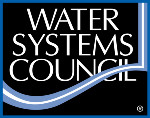
Hurricanes, Tornadoes, Flooding…Oh My!
 We know with everything else
We know with everything else
going on in the world the last
thing you want to think about
is having to prepare for a
natural disaster. However, it is
a task you should tackle to
protect you and your family.
Storm Prep
Before disaster strikes, make a
plan. Consider specific needs of
your household and use ready.gov to put your plan into action. They have great tips and resources plus Build a Kit which gives you a list of supplies you need to weather the storm. One of the biggest needs is safe water! You will need to store at least one gallon of water per person per day for three days for drinking and sanitation.
However, individual needs vary. Keep in mind the following:
• Children, nursing mothers, and sick people may need more water.
• A medical emergency might require additional water.
• If you live in a warm weather climate more water may be necessary.
If you are in an area where the power goes out often during storms, you
may consider purchasing a generator to power your well pump at very
least. Note that you should not use the generator if flooding has occurred.
More information is provided on flooding below. If you are planning on
purchasing a generator, finding the right size is imperative. Consumer
Reports has information on sizing a generator for your home needs. You
can also contact your licensed well contractor for assistance.
After the Storm
Once the storm has passed, you will need to assess the property,
including your well and septic.
If in doubt about your water supply or if you have flooding, do not
drink or cook with the water.
Moving flood water or high winds can carry large debris that could loosen
well hardware, dislodge well construction materials, or distort casing.
Coarse sediment in flood waters could erode pump components. If the
well is not tightly capped, sediment, debris, and flood water could enter
the well and contaminate it. Older wells and wells that are less than 50
feet deep are more susceptible to contamination. Visually inspect your
wellhead (cap and casing) and above ground well components for
damage.
After flood waters have receded and the pump and electrical system have
dried, do not turn on the equipment until the wiring system has been
checked by a qualified electrician, well or pump contractor. Remember
that there is danger of electrical shock from any electrical device that
has been flooded. Rubber boots and gloves are not adequate protection
from electrical shock.
Test your water for bacteria at minimum before using it. Contact your
local health department to see if they are offering any free or low cost
testing due to flooding or find a state certified laboratory using our
interactive map. The wellcare® Hotline also has a limited supply
of FREE do-it-yourself bacteria test kits. If you experience flooding and
need an emergency test, contact the Hotline at 888.395.1033.
In most emergency situations, obtaining bottled water is the most
commonly promoted way to access safe drinking water. We hope you
prepped an emergency water supply per above. If you haven’t, there
are treatment methods you can use when the quality of water is
compromised during an emergency and it is not possible to obtain
bottled water. But before considering such an approach contact the local
health authorities to assure the emergency has not introduced any
chemical contaminants of concern into your well system. If the water only
needs to be disinfected to be potable, there are 4 main options to treat
water to make it safe for consumption: boiling, chlorination, distillation,
and water treatment devices certified for microbial reduction of bacteria,
cysts, and viruses. Do not rely on water treatment filters or devices that
are NOT certified for microbial reduction as they may not provide the
protection necessary for emergency situations. Consult a water treatment
professional, manufacturer, or Water Quality Association’s website for
more information.
Septic systems should not be used immediately after floods. Drainfields will not work until water has receded. Septic lines may have been broken during flooding or other storms. Contact your septic service immediately for inspection.
Additional information and instructions for emergency disinfection can be
found in our Emergencies & Disasters and Wells sheet.
 Water Systems Council
Water Systems Council